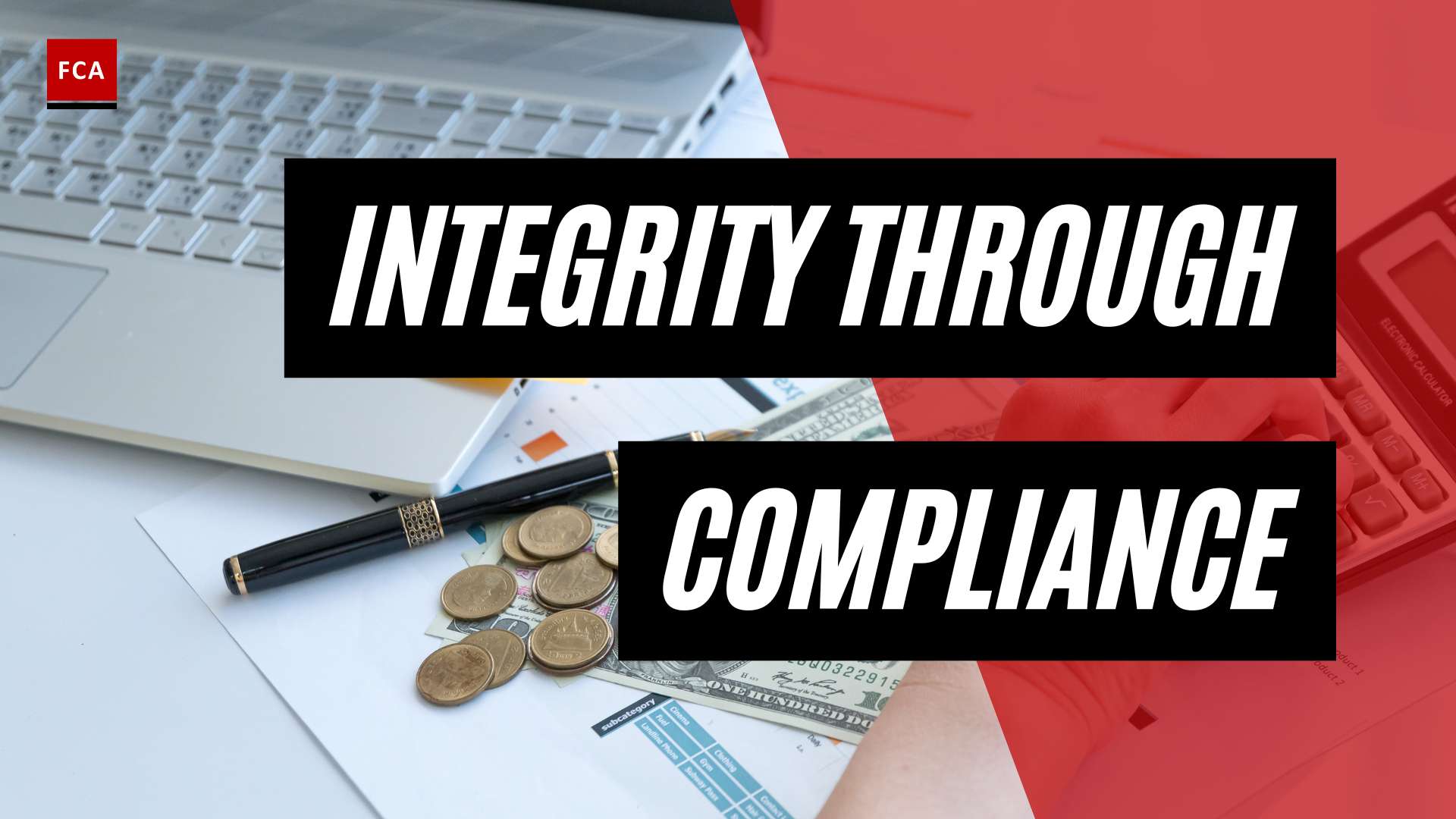Understanding AML Training
In the fight against money laundering and financial crimes, AML (Anti-Money Laundering) training plays a vital role. AML training is designed to educate professionals working in compliance, risk management, anti-money laundering, and anti-financial crime on the best practices and regulatory requirements necessary to detect and prevent money laundering activities.
Importance of AML Training
The importance of AML training cannot be overstated. It equips individuals with the knowledge and skills necessary to identify and report suspicious transactions, ensuring compliance with anti-money laundering laws and regulations. By understanding the red flags and indicators of money laundering, professionals can take proactive measures to prevent criminals from exploiting financial systems for illicit purposes.
AML training also fosters a culture of compliance within organizations. It helps employees recognize their role in the fight against money laundering and encourages a heightened sense of responsibility when handling financial transactions. By keeping employees informed and up to date on the latest AML practices, organizations can minimize the risk of non-compliance, reputational damage, and financial loss.
Regulatory Requirements for AML Training
Regulators worldwide have recognized the critical role of AML training in combating financial crimes. They have implemented specific requirements that organizations must adhere to in order to ensure effective AML training programs. These requirements may vary from country to country, but they generally include the following:
-
Tailoring Training to Job Roles: Effective AML training programs should be tailored to different job roles within an organization. Front-line staff should receive specific training relevant to their functions, ensuring they can identify and report suspicious activities. Senior management should have a strategic understanding of AML obligations and oversee the implementation of AML policies (Financial Crime Academy).
-
Topics Covered in AML Training: A comprehensive AML training program should cover a range of topics, including red flags for suspicious activity, customer due diligence, reporting requirements to relevant authorities, and internal policies and procedures. Training should also address emerging trends, new regulations, and best practices to ensure that knowledge remains current and applicable (Financial Crime Academy).
-
Leveraging Technology in AML Training: Technology can play a significant role in enhancing the effectiveness of AML training. Many financial institutions now utilize e-learning modules, simulations, and interactive platforms to make training engaging and interactive. These technologies enable employees to apply their knowledge in realistic scenarios, improving their ability to identify and respond to potential money laundering activities (Financial Crime Academy).
To ensure compliance with regulatory requirements, organizations should stay up to date with the specific AML training guidelines and regulations applicable to their jurisdiction. By incorporating these requirements into their training programs, organizations can build a robust framework for combating money laundering and protecting their financial systems.
In the next sections, we will explore the key components of effective AML training and delve into the best practices organizations can adopt to ensure their AML training programs are comprehensive, up to date, and in line with regulatory expectations.
Key Components of Effective AML Training
When it comes to Anti-Money Laundering (AML) training, there are several key components that contribute to its effectiveness. These components include tailoring the training to job roles, covering relevant topics, and leveraging technology for enhanced learning experiences.
Tailoring Training to Job Roles
Effective AML training should be tailored to different job roles within an organization. This ensures that employees receive training that is relevant to their specific functions and responsibilities. For example, front-line staff who interact directly with customers should receive training that focuses on recognizing red flags for suspicious activity, customer due diligence, and reporting requirements to relevant authorities. On the other hand, senior management should have a strategic understanding of AML obligations and the role they play in ensuring compliance (Financial Crime Academy).
By tailoring AML training to job roles, organizations can provide employees with the knowledge and skills necessary to effectively fulfill their AML responsibilities. This targeted approach enhances the relevance and engagement of the training, making it more impactful.
Topics Covered in AML Training
AML training programs should cover a range of topics to ensure comprehensive knowledge and understanding of AML regulations and obligations. Some of the key topics that should be covered include:
-
Red flags for suspicious activity: Employees should be trained to recognize signs that may indicate potential money laundering or terrorist financing activities. This includes understanding unusual transaction patterns, high-risk industries, and customer behavior that deviates from the norm.
-
Customer due diligence: AML training should provide guidance on conducting thorough customer due diligence, including verifying customer identities, assessing customer risk profiles, and ongoing monitoring of customer transactions.
-
Reporting requirements: Employees should be familiar with the reporting requirements for suspicious transactions and other AML-related activities. This includes knowing when and how to file suspicious activity reports (SARs) or other relevant reports to the appropriate authorities.
-
Emerging trends and typologies: AML training should keep employees informed about the latest trends and typologies in money laundering and terrorist financing. This knowledge helps employees stay vigilant and adapt their AML practices accordingly.
By covering these and other relevant topics in AML training, organizations can equip their employees with the necessary knowledge to detect and prevent illicit financial activities.
Leveraging Technology in AML Training
Technology can play a crucial role in enhancing the effectiveness of AML training. Many organizations are leveraging technology to provide more accessible, interactive, and scalable training experiences. Some ways technology can be used in AML training include:
-
E-learning modules: Online platforms and e-learning modules can be used to deliver AML training to employees. These modules can be accessed at any time and from anywhere, allowing employees to learn at their own pace and convenience. They can include interactive elements such as quizzes, videos, and simulations, making the training engaging and effective.
-
Simulations and case studies: Technology can be used to create realistic simulations and case studies that allow employees to apply their AML knowledge in practical scenarios. This hands-on approach helps reinforce learning and prepares employees to handle real-life AML situations.
-
Data analytics: Technology can be used to analyze large amounts of data and identify patterns or anomalies that may indicate potential money laundering activities. This can be used as a training tool to help employees understand how data analysis can assist in AML efforts.
By leveraging technology in AML training, organizations can enhance the learning experience, improve knowledge retention, and ensure that employees are well-equipped to meet AML compliance requirements (KyrosAML).
In conclusion, effective AML training incorporates tailoring the training to job roles, covering relevant topics, and leveraging technology to enhance learning experiences. By implementing these key components, organizations can strengthen their AML compliance programs and equip their employees with the knowledge and skills necessary to detect and prevent money laundering and terrorist financing activities.
Best Practices for AML Training
To ensure a robust Anti-Money Laundering (AML) compliance program, organizations must implement best practices for AML training. These practices help employees stay updated on the latest regulations and develop the necessary skills to detect and prevent money laundering and other financial crimes. Here are three key best practices for AML training:
Regular Training Sessions
Regular training sessions for staff are crucial to ensure knowledge is up to date and to demonstrate ongoing compliance with regulations. By conducting regular training sessions, organizations can reinforce their commitment to AML compliance and provide employees with the necessary knowledge and skills to identify and address potential risks.
To maximize the effectiveness of these sessions, it’s important to tailor the training to different roles within the organization. AML training for employees should cover topics such as red flags for suspicious activity, customer due diligence, and reporting requirements to relevant authorities (Financial Crime Academy). Additionally, training for the board of directors and senior management should focus on their responsibilities in ensuring AML compliance (aml training for board of directors).
Documentation of Training Sessions
Proper documentation of AML training sessions is essential for demonstrating compliance during regulatory audits and investigations. Organizations should maintain records of attendance and the content covered in each training session. By documenting training sessions, organizations can provide evidence of their commitment to AML compliance and their efforts to educate employees on AML regulations.
Assessments and Certifications
Regular assessments and certifications following AML training help ensure that employees have understood the content and are capable of implementing AML best practices in their daily roles. Assessments can take the form of quizzes, case studies, or real-life scenarios to test employees’ understanding of AML concepts and their application in different situations. Certification programs, such as AML training certification, provide employees with recognized credentials that validate their knowledge and expertise in AML compliance.
By implementing assessments and certifications, organizations can demonstrate their commitment to maintaining a knowledgeable and skilled workforce that contributes to a robust AML compliance framework (KyrosAML).
By following these best practices, organizations can enhance the effectiveness of their AML training programs. Through regular training sessions, proper documentation, and assessments, organizations can ensure that employees are equipped to identify and prevent money laundering activities, contributing to a strong AML compliance program. For more information on AML training regulations and guidelines, refer to our article on regulatory requirements for AML training.
Building an AML Compliance Program
To effectively combat money laundering and ensure regulatory compliance, organizations need to establish a robust Anti-Money Laundering (AML) compliance program. This section will explore the key components of an AML compliance program, the role of a compliance officer, and the importance of training and development in AML compliance.
Components of an AML Compliance Program
An AML compliance program is a set of policies, procedures, and controls that guide financial institutions in identifying and preventing money laundering activities. While the specific components may vary based on the organization’s size, industry, and regulatory requirements, there are common pillars that form the foundation of an effective AML compliance program.
According to Unit21, the key components of an AML compliance program include:
-
Compliance Officer: Every AML compliance program should have a designated compliance officer, also known as a Money Laundering Reporting Officer (MLRO). The compliance officer is responsible for managing AML operations, acting as an intermediary between the compliance department and senior management, and creating procedures to detect and prevent money laundering.
-
Dedicated Resources: Adequate resources, both human and technological, should be allocated to the compliance function. This ensures that the compliance team has the necessary tools and support to carry out their responsibilities effectively.
-
AML Compliance Policies: Clear and comprehensive AML compliance policies should be established, outlining the organization’s commitment to preventing money laundering. These policies should cover customer due diligence, suspicious activity reporting, record-keeping, and other relevant areas.
-
Key Controls and Procedures: The AML compliance program should include robust controls and procedures that help identify and mitigate money laundering risks. This may involve transaction monitoring, customer screening, and enhanced due diligence for high-risk customers.
-
Compliance Framework: An effective AML compliance program requires a strong compliance framework within the organization. This includes governance structures, oversight mechanisms, and internal controls that promote a culture of compliance throughout the institution.
Role of Compliance Officer
The compliance officer plays a critical role in the successful implementation of an AML compliance program. As mentioned earlier, the compliance officer is responsible for managing AML operations, acting as a liaison between the compliance department and senior management, and creating procedures to detect and prevent money laundering.
The compliance officer oversees the day-to-day activities related to AML compliance, ensuring that the organization adheres to applicable laws, regulations, and internal policies. They are responsible for establishing and maintaining a strong compliance culture, providing guidance to staff, and conducting regular assessments to identify and address any compliance gaps.
Training and Development in AML Compliance
Proper training and development are vital for implementing a successful AML compliance program. All team members, including risk and compliance professionals, need to receive adequate training and have access to supporting documentation to guide their work. Training sessions should cover topics such as AML training for employees and AML training for the board of directors to ensure a comprehensive understanding of AML requirements.
Organizations should invest in ongoing training programs to keep employees updated on the latest regulatory developments, money laundering typologies, and best practices. This enables staff to effectively identify and report suspicious activities, minimizing the risk of money laundering within the organization.
Furthermore, assessments and certifications play a crucial role in validating the effectiveness of the AML training program. Regular assessments help identify areas for improvement and ensure that employees maintain a strong grasp of AML concepts. Certifications, such as AML training certification, provide recognition of an individual’s expertise and dedication to AML compliance.
By building an AML compliance program with the appropriate components, assigning a dedicated compliance officer, and prioritizing training and development, organizations can establish a strong foundation for combating money laundering and meeting regulatory obligations.
Consequences of Non-Compliance
Ensuring compliance with Anti-Money Laundering (AML) regulations is of paramount importance for organizations. Failure to meet AML compliance requirements can result in significant fines and penalties, which can have severe repercussions on both the reputation and financial stability of the organization. In this section, we will explore the fines and penalties for AML violations, recent examples of AML fines and penalties, and the importance of having a robust AML compliance program.
Fines and Penalties for AML Violations
Financial organizations that fail to comply with AML regulations can face substantial fines and penalties. The exact fines and penalties vary depending on the jurisdiction and the severity of the violations. In the United States, for instance, the Bank Secrecy Act (BSA) imposes penalties of up to $500,000 and imprisonment for up to ten years for severe violations. The Office of Foreign Assets Control (OFAC) enforces AML sanctions in the United States, and violations can result in fines of up to $20 million and imprisonment for up to 30 years (Unit21).
Recent Examples of AML Fines and Penalties
Recent notable examples highlight the importance of AML compliance and the potential consequences of non-compliance. Capital One, for instance, was fined $390 million for willful and neglectful violations of the Bank Secrecy Act (Unit21). BitMEX, a cryptocurrency exchange, received a $100 million fine for AML failings. NatWest, a major UK bank, faced a fine of £265 million for failing to prevent money laundering (Unit21). These examples demonstrate the severity of the penalties and the necessity of implementing robust AML compliance measures.
Importance of AML Compliance Program
The consequences of non-compliance highlight the importance of having a comprehensive and effective AML compliance program. Organizations should prioritize the establishment of an AML compliance program that aligns with regulatory requirements and industry best practices. This program should include thorough training, ongoing assessments, and certifications to ensure that employees and stakeholders are well-versed in AML regulations and obligations.
Having a robust AML compliance program not only helps organizations avoid fines and penalties but also protects against reputational damage and potential loss of business. It demonstrates a commitment to ethical and responsible conduct, ensuring the integrity of financial systems and safeguarding against money laundering and other illicit activities.
To build an effective AML compliance program, organizations should consider the components of such a program, the role of a designated compliance officer, and the importance of ongoing training and development in the field of AML compliance. By implementing a comprehensive compliance program, organizations can mitigate the risk of non-compliance, safeguard their operations, and contribute to the overall integrity of the financial system.
For more information on AML training requirements and best practices, please refer to our articles on anti-money laundering training requirements, AML training for employees, AML training for the board of directors, and AML training program standards.









